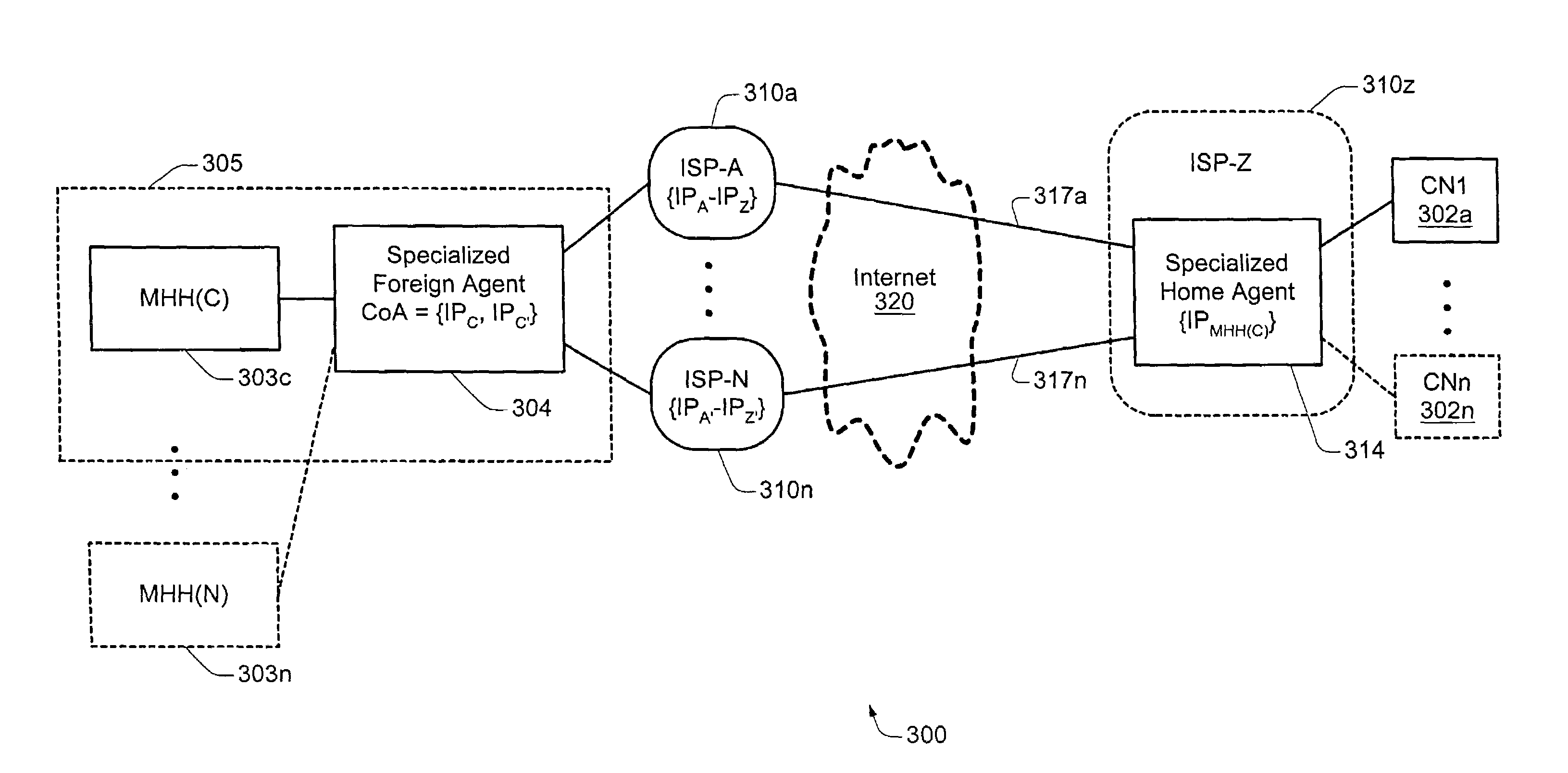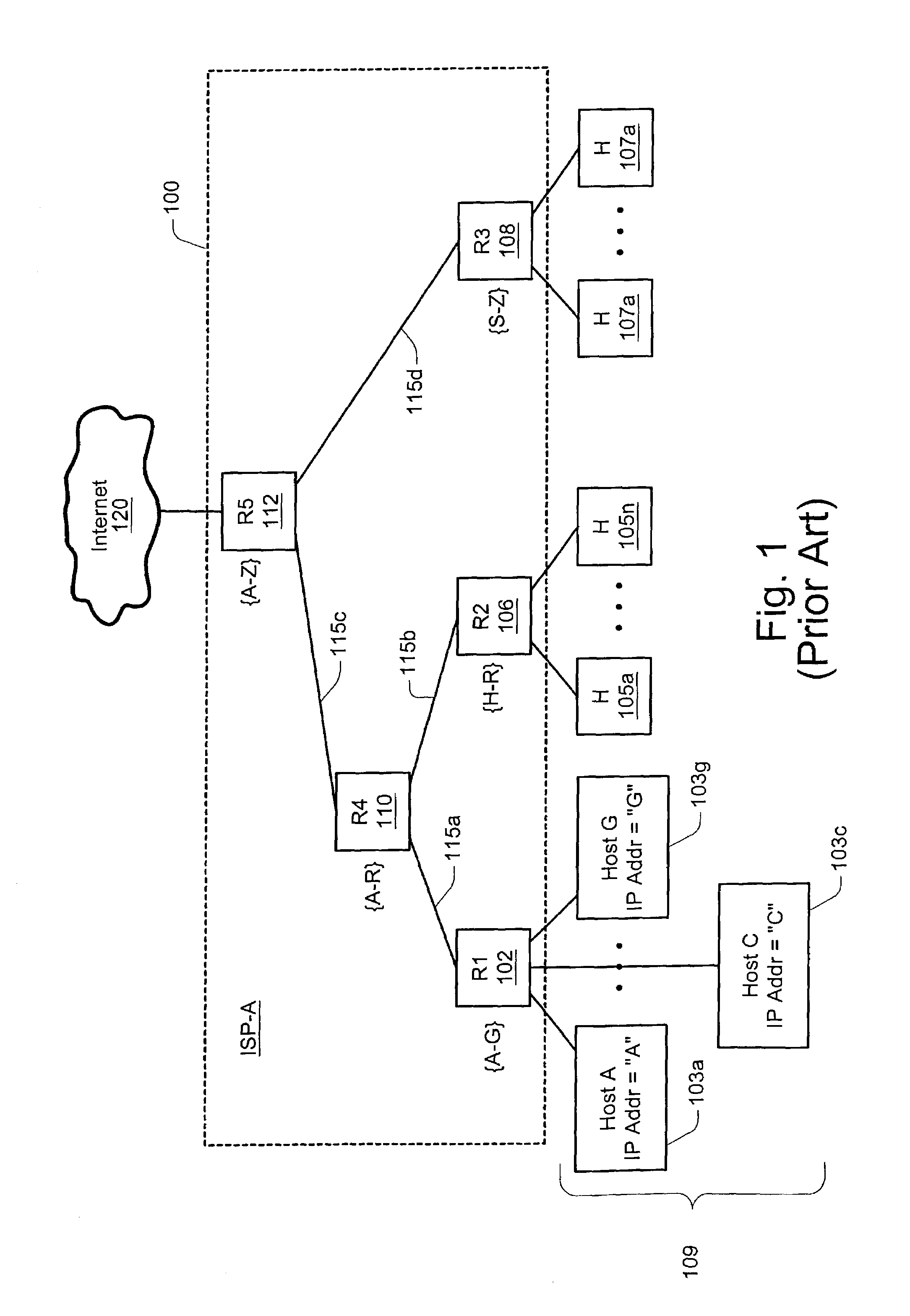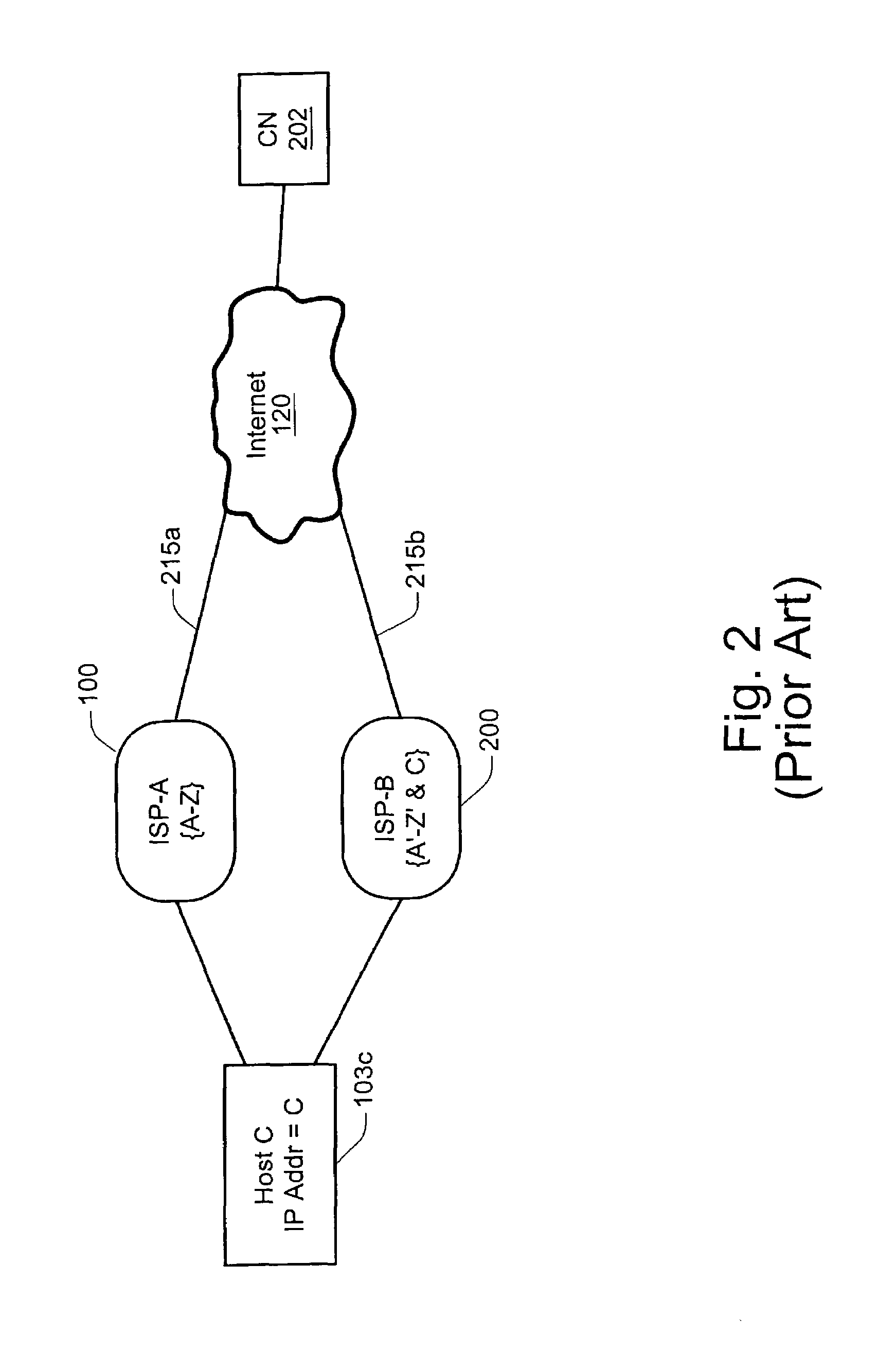Technique for providing multi-homing capability in data networks
- Summary
- Abstract
- Description
- Claims
- Application Information
AI Technical Summary
Benefits of technology
Problems solved by technology
Method used
Image
Examples
Embodiment Construction
[0030]Various aspects of the present invention are described herein for providing multi-homing capability to networks, subnetworks, and / or hosts through the use of a multiplicity of topologically correct IP addresses. For example, according to various embodiments of the present invention, extensions to Mobile IP (MIP) technology may be used as an alternative solution to the present-day problems associated with IP address multi-homing of a particular host, network, and / or subnet. According to one implementation, Specialized Home Agents may be deployed in a data network and configured to have the ability to register and manage multiple Care-of-Addresses (CoAs) for one or more multi-homed hosts (MHHs) to achieve ends similar to traditional “multi-homing” of hosts implemented via conventional routing protocols.
[0031]According to specific embodiments of the present invention, Mobile IP (MIP) Home Agent and Mobile IP (MIP) Foreign Agent functionality may be adapted with one or more extens...
PUM
 Login to View More
Login to View More Abstract
Description
Claims
Application Information
 Login to View More
Login to View More - R&D
- Intellectual Property
- Life Sciences
- Materials
- Tech Scout
- Unparalleled Data Quality
- Higher Quality Content
- 60% Fewer Hallucinations
Browse by: Latest US Patents, China's latest patents, Technical Efficacy Thesaurus, Application Domain, Technology Topic, Popular Technical Reports.
© 2025 PatSnap. All rights reserved.Legal|Privacy policy|Modern Slavery Act Transparency Statement|Sitemap|About US| Contact US: help@patsnap.com



